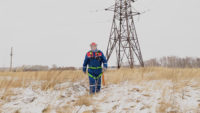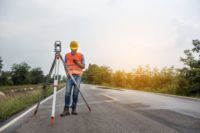Scrolling through all of the apps on your phone, do you ever wonder how it all began? Despite all the online discussion about when the first mobile app was created, most can agree it was the addictive game, “Snake,” on the Nokia 6110. But the app as we know it was created by Steve Jobs and Apple’s iPhone, impacting almost every area of our lives.
Ironically, mobile apps did not have much actual application at first and the most popular ones were games or novelty apps. (Remember Lightsaber Unleashed?) But then, the prevalence and reliance on social media platforms increased dramatically, with many people using an app to access these networks. Mobile apps became primary channels of communication for many people, establishing this type of technology as a ubiquitous tool in daily life and work – “app” was even voted as word of the year in 2010.
“Mobile app” in a nutshell
It’s clear that apps have become a word know around the world, but the definition of “mobile app” can vary, however, essentially it can be agreed upon that a mobile app is a type of self-contained software application that runs on a mobile device like a smartphone, watch or tablet, providing some kind of function or service. As mentioned earlier, apps have become normal channels for communication of all kinds – voice, video, text – as well as main access points to social media and e-commerce/marketing activity.
Growing role in OHS
Apps have also become incredibly important for occupational health and safety, protecting workers without requiring them to carry another device. Apps can be downloaded on your existing mobile device, whatever that is, and protect people in the least intrusive way possible.
The number of work safety apps have skyrocketed in the last couple decades, providing mobile safety apps for every OHS challenge and safety hazard. Industries such as construction, healthcare, hotel and hospitality, and water/electrical utilities have begun using safety apps to protect their teams and vulnerable employees.
There are apps for specific occupational hazards like the OSHA-NIOSH Heat Safety Tool app which monitors the employee’s temperature, humidity and location, planning work and precautions around the heat index forecast. The Chemical Hazards Pocket Guide app will provide worker protection and personal protection recommendations for a long list of hazardous chemicals used in the workplace. There’s even an app for ladder safety aptly called the NIOSH Ladder Safety App which helps workers set their extension ladder at the safe and secure angle of 75.5 degrees.
Mobile app features
With this surge in mobile work safety apps also came an increase in the number of features available on these apps. When looking for a work safety app, make sure it’s in consultation with a list of the current occupational health and safety hazards your team members are working around – identify the safety hazards that are most dangerous and look for app features that can help mitigate these hazards and risks.
Fall detection and motion features
A common and major safety hazard in almost every work environment is the risk of slips, trips and falls. By leveraging the sensor technology on your device, the mobile app can detect a dangerous fall and request help when they are injured and unconscious.
Safety check-ins
An incredibly effective safety practice is the requirement of check-ins to confirm the employee’s safety. Performed at pre-established times and intervals, safety check-ins can be done manually with a phone call or automated on a mobile app.
Panic button and panic alarm
A number of mobile apps provide an in-app panic button if the worker is feeling threatened or their well-being is in jeopardy. The panic button can be discreetly pressed, requesting emergency help without letting the aggressor know. On the other hand, a panic alarm is the opposite of discreet, emitting a loud sound that will attract attention and help.
Dangerous noise levels
High levels of prolonged noise can cause serious damage to workers’ hearing, posing a considerable threat to their health and safety. Safety apps can monitor noise levels, raising an alert when they reach frequencies dangerous to the human ear.
Safety audits
Mobile apps are also fantastic tools to help you perform safety audits on your workplace according to your OHS legislation, regulations and industry standards. This feature can provide a wealth of valuable OHS data, particularly on how your workplace safety has improved or changed over time.
Accurate location tracking
If a worker is in trouble, the most critical information needed is their location so that emergency help can be provided as soon as possible. Mobile apps will use cellular or wi-fi networks to locate employees, but can also employ satellite and GPS technology when these people work in remote locations with little to no cellular signal.
Easy communication
In addition to locating your team members, remaining in communication with them is equally as important. If an employee is connecting with the employer or a monitor during their shift, a lot of valuable information about their context and circumstances can be relayed and documented. This can include text and voice messaging, but also movements of contact such as a quick check in to communicate they are safe.
The future of mobile safety apps
With so many available features, what could mobile safety apps offer down the road? Mobile apps will become increasingly comprehensive, providing safety features based on the evolving technology of the device or wearable. Signs are pointing towards more thorough health and safety monitoring that observes data like the employee’s vital signs and stress levels.
Additionally, if new safety hazards come up, new safety features and technology will be developed in response, addressing these new OHS challenges.
Silently protecting employees
So why are so many employers using mobile safety apps to protect their people? Quite simply, it’s because a mobile safety app can be integrated into existing work practices easily, and an app is incredibly unobtrusive, even with all of the features it offers.
Like it or not, mobile apps are a major component of modern life, impacting us every day in a number of major ways. What was once a fun piece of software or game, apps are now integral parts of our lives, work, and our health and safety.




